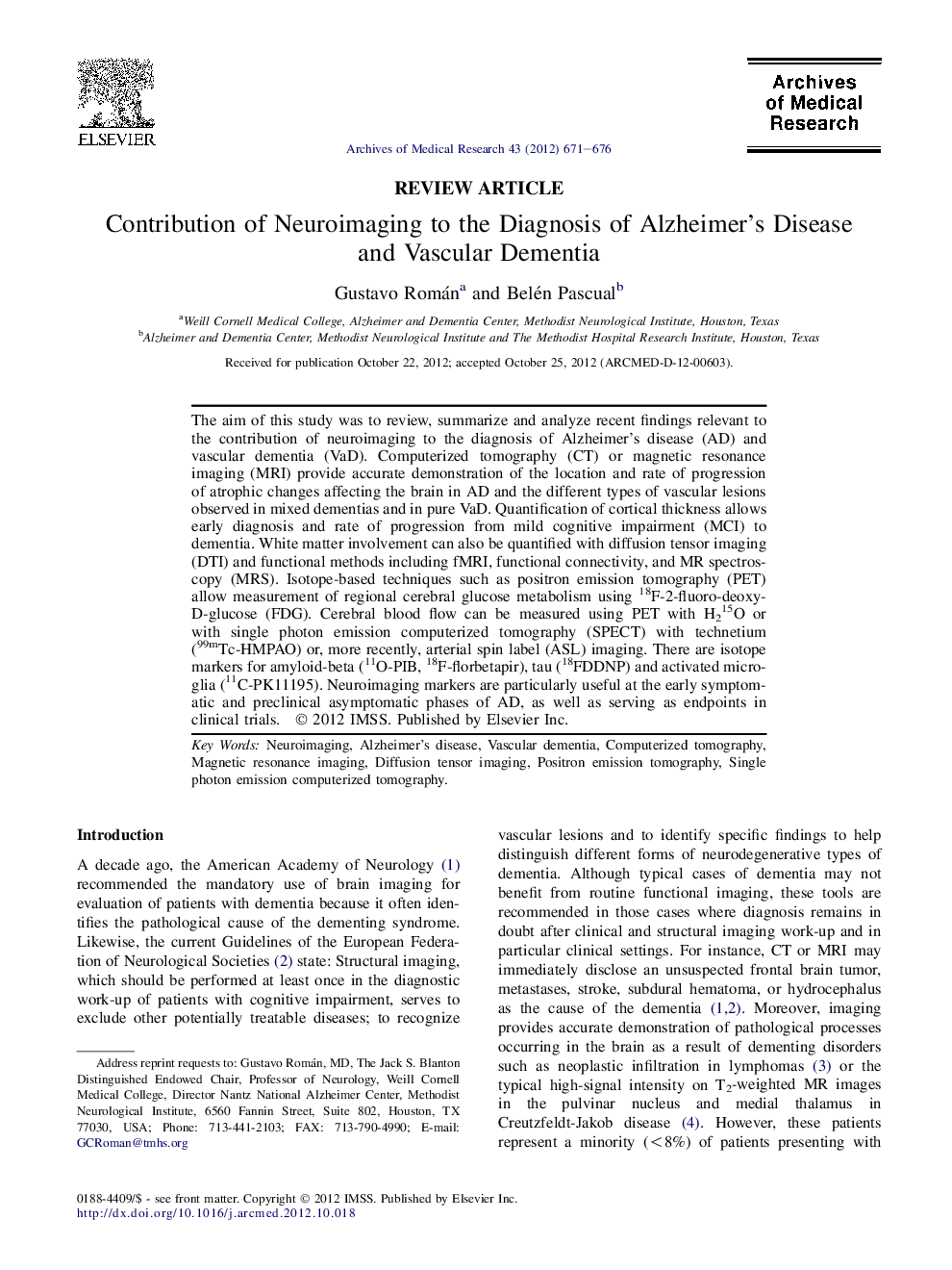| کد مقاله | کد نشریه | سال انتشار | مقاله انگلیسی | نسخه تمام متن |
|---|---|---|---|---|
| 3446613 | 1595483 | 2012 | 6 صفحه PDF | دانلود رایگان |

The aim of this study was to review, summarize and analyze recent findings relevant to the contribution of neuroimaging to the diagnosis of Alzheimer’s disease (AD) and vascular dementia (VaD). Computerized tomography (CT) or magnetic resonance imaging (MRI) provide accurate demonstration of the location and rate of progression of atrophic changes affecting the brain in AD and the different types of vascular lesions observed in mixed dementias and in pure VaD. Quantification of cortical thickness allows early diagnosis and rate of progression from mild cognitive impairment (MCI) to dementia. White matter involvement can also be quantified with diffusion tensor imaging (DTI) and functional methods including fMRI, functional connectivity, and MR spectroscopy (MRS). Isotope-based techniques such as positron emission tomography (PET) allow measurement of regional cerebral glucose metabolism using 18F-2-fluoro-deoxy-D-glucose (FDG). Cerebral blood flow can be measured using PET with H215O or with single photon emission computerized tomography (SPECT) with technetium (99mTc-HMPAO) or, more recently, arterial spin label (ASL) imaging. There are isotope markers for amyloid-beta (11O-PIB, 18F-florbetapir), tau (18FDDNP) and activated microglia (11C-PK11195). Neuroimaging markers are particularly useful at the early symptomatic and preclinical asymptomatic phases of AD, as well as serving as endpoints in clinical trials.
Journal: Archives of Medical Research - Volume 43, Issue 8, November 2012, Pages 671–676